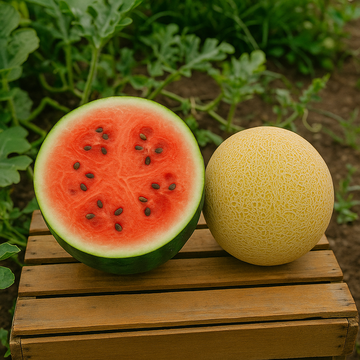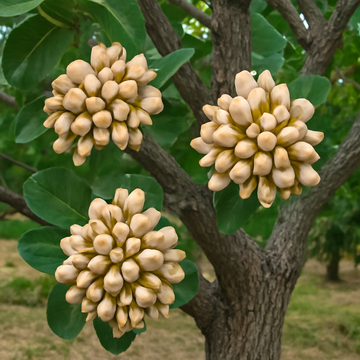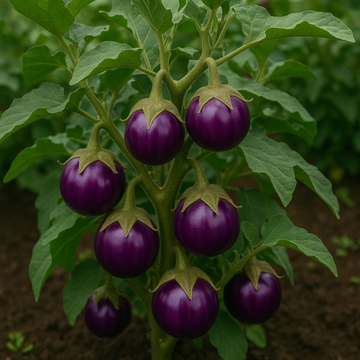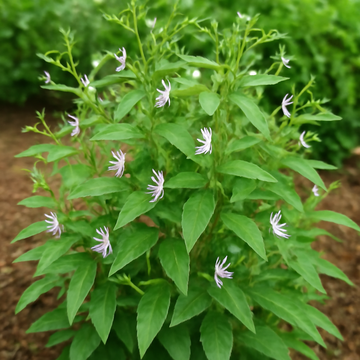
There’s nothing quite like the taste of fresh, homegrown melons. Whether it’s the juicy bite of a watermelon on a hot day or the sweet fragrance of a ripened muskmelon, growing melons from seeds is a rewarding experience for any gardener. With the right technique, tools, and patience, you can enjoy a bountiful harvest of homegrown watermelons and muskmelons right from your backyard or balcony.

Why Grow Melons from Seeds?
Starting melons from seeds offers several benefits:
- Access to a wider range of melon seed varieties
- Control over growing conditions and organic practices
- Cost-effective compared to buying transplants
- Stronger root development from seedling stage
- Satisfaction of nurturing plants from seed to fruit
If you want the best taste and texture, growing melons at home ensures fresh, chemical-free fruits for your family.
Best Melon Varieties to Grow from Seeds
Here are some reliable and delicious melon types to try:
- Watermelon (Citrullus lanatus) – Choose varieties like Sugar Baby, Crimson Sweet, or Black Diamond.
- Muskmelon (Cucumis melo) – Grow classic varieties like Hales Best, Kharbuja, or cantaloupe types with netted skin.
These varieties are known for their high germination rate, rich sweetness, and ability to thrive in home gardens.
When to Plant Melon Seeds
Melons love warmth. For best results:
- Start seeds indoors 3–4 weeks before the last frost date in cooler climates.
- In warm regions, direct sow melon seeds outdoors once the soil temperature is consistently above 21°C (70°F).
- Sow melon seeds in late spring or early summer for optimal growth.
This ensures they get a full season of sun and warmth to mature.
How to Grow Melons from Seeds
Follow these steps to successfully grow watermelons and muskmelons from seeds:
1. Choose the Right Spot
Select a location with full sunlight (6–8 hours daily) and good air circulation. Melons need warmth and space to sprawl.
2. Prepare the Soil
Use well-drained, sandy loam soil enriched with organic compost. Ideal soil pH: 6.0–6.8. Ensure the area is free from waterlogging.
3. Sow the Seeds
- Sow melon seeds 1 inch deep and 2–3 feet apart in mounds or rows.
- Water thoroughly after planting.
- Thin the seedlings to the strongest 1–2 plants per mound once they sprout.
4. Watering and Feeding
- Keep soil evenly moist but not soggy.
- Once fruits begin to form, reduce watering to increase sugar concentration.
- Use a balanced organic fertilizer during early growth, and switch to a low-nitrogen, high-potassium formula during fruiting.

Caring Tips for Melon Plants
- Use mulch to retain soil moisture and control weeds.
- Train vines using trellises in smaller gardens.
- Avoid wetting leaves to reduce risk of powdery mildew.
- Hand-pollinate flowers if bee activity is low.
With consistent care, melons can thrive even in small home garden spaces.
Harvesting Watermelon and Muskmelon
Knowing when to harvest is key:
Watermelon:
- Look for the ground spot turning yellow.
- Tendrils near the fruit stem begin to dry out.
- A deep hollow sound when tapped.
Muskmelon:
- Fruit slips easily from the vine with gentle pressure.
- Rich, fruity aroma at the stem end.
- Skin turns from green to tan or netted pattern.
Homegrown melons are best harvested at full ripeness for the sweetest flavor.

Final Thoughts
Growing watermelon and muskmelon from seeds is easier than you think — and incredibly rewarding. With the right soil, sunlight, and care, you can enjoy a garden full of delicious, juicy melons all summer long.
Ready to grow your own melons?
Explore premium watermelon seeds and muskmelon seeds online at AvniSeeds.com and start planting today!




